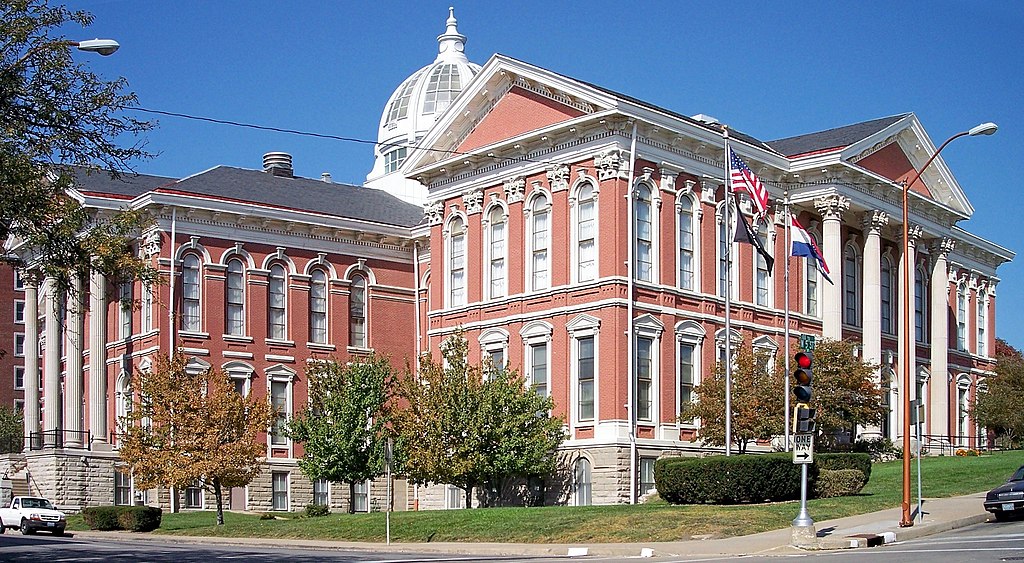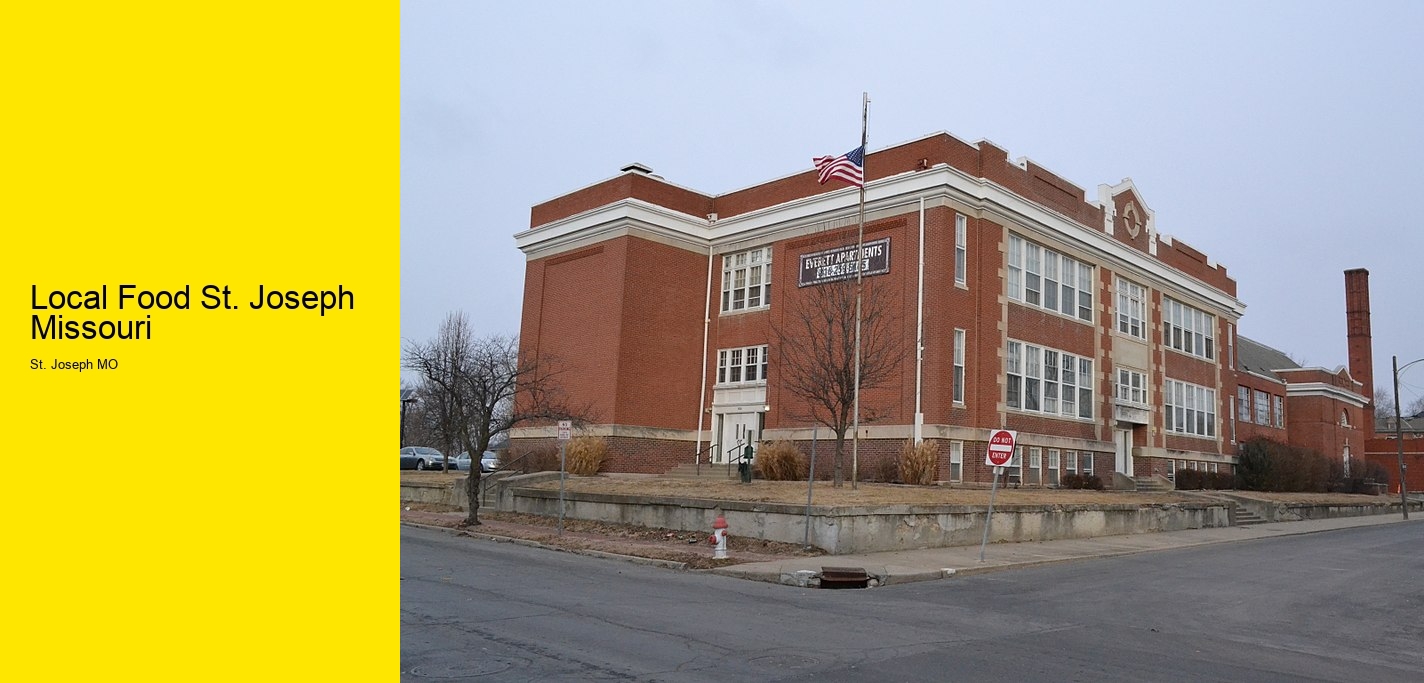Local Food St Joseph Missouri: The Culinary Scene In St Joseph, Missouri Showcases A Delicious Array Of Regional Cuisine
Exploring the Culinary Landscape of St. Joseph
The culinary landscape in this vibrant city offers a delightful array of choices, yet many find themselves grappling with the challenge of identifying authentic local flavors. The struggle to discover eateries that prioritize freshness and locality can be disheartening for food enthusiasts.
Unearthing true gems often leads to a cycle of disappointment as diners sift through generic chains and lackluster menus. It's easy to feel overwhelmed by the sheer volume of options, making it tough to pin down those establishments that genuinely celebrate regional produce and culinary artistry.
But fear not, because the local dining scene is brimming with establishments that rise above the rest, and they take immense pride in addressing these concerns! They curate menus that highlight:
- Seasonal ingredients sourced from nearby farms
- Innovative dishes that reflect the community's rich heritage
- Warm, inviting atmospheres that make every meal memorable
As someone who has savored the delightful offerings of these local spots, I can confidently say that they go above and beyond to ensure every experience is exceptional. With a commitment to:
- Crafting unique culinary experiences that celebrate local traditions
- Providing knowledgeable staff who are passionate about the menu
- Creating an inviting ambiance that encourages connection over food
The dedication to quality and authenticity truly sets them apart in the local food realm. Those seeking to indulge in the flavors of St. Joseph will find themselves delighted and inspired by what awaits them in this charming city!
Exploring Popular Local Dishes and Ingredients in St. Joseph MO
Rich flavors characterize the culinary landscape of St. Joseph, where regional specialties reflect the area's agricultural bounty. Farm-fresh produce, vibrant spices, and time-honored recipes come together to create a memorable dining experience.
Local Food St. Joseph Missouri - council–manager government
- Joseph Robidoux
- St. Joseph Museums
Meat lovers delight in the local barbecue scene, where smoked brisket and pulled pork reign supreme. These dishes often feature a tangy sauce, blending sweetness and heat, making each bite a flavor explosion. In addition, hearty casseroles made with seasonal vegetables often grace family tables, highlighting the importance of community and shared meals.
- Unique Ingredients: Local markets offer seasonal produce, including heirloom tomatoes and specialty peppers.
- Culinary Traditions: Regional recipes often incorporate family secrets passed down through generations.
- Ingredient Pairings: Consider pairing roasted vegetables with locally sourced proteins for a balanced meal.
One must-try dish is the iconic St. Joseph-style chili, a unique twist featuring a blend of spices and local beans, served with cornbread on the side. This dish embodies the warmth and hospitality of the region, inviting diners to savor each spoonful. The local dining scene thrives on freshness, with many establishments proudly sourcing ingredients from nearby farms.
In St. Joseph, culinary enthusiasts can explore various food festivals, celebrating local flavors and fostering community connections. These events highlight seasonal ingredients, allowing chefs to showcase their creativity while educating attendees about the local agricultural scene.
Local Food St. Joseph Missouri - council–manager government
- Jesse James
Farm-to-Table Initiatives in St. Joseph, MO
Accessing fresh, wholesome produce in St. Joseph can sometimes feel like navigating a maze. The quest for quality ingredients often leads consumers to question where their food truly originates. However, local eateries are on a mission to transform this experience. They curate meals using seasonal harvests from nearby farms, ensuring patrons enjoy vibrant flavors while supporting local agriculture.
One standout in this movement is the commitment of various establishments to source directly from community farmers. This collaboration guarantees not only freshness but also sustainability. By shortening the supply chain, these businesses significantly reduce their carbon footprint, promoting ecological balance.
- Seek out farmers' markets for seasonal delights.
- Participate in community-supported agriculture (CSA) programs to receive fresh produce regularly.
- Explore local restaurants that highlight farm-sourced ingredients on their menus.
Understanding the significance of this initiative, local chefs are continually innovating their menus based on what's available. This not only enhances the dining experience but also fosters a deeper connection between the diner and the origins of their food. The culinary landscape thrives when chefs and farmers work hand in hand, creating a rich tapestry of flavors unique to the region.
Embracing the farm-to-table philosophy means engaging with the land and appreciating the artisans behind it. The synergy between local producers and restaurants showcases the best of St. Joseph's agricultural bounty. This partnership assures that every meal tells a story - one of dedication, quality, and community spirit.

Celebrating Local Cuisine in St. Joseph MO
St. Joseph has a vibrant tapestry of culinary gatherings that showcase the region's diverse flavors and traditions. Community events often emphasize the importance of fresh, locally-sourced ingredients, allowing visitors to engage with the rich agricultural heritage of the area. From farmers' markets to food festivals, each occasion is imbued with the spirit of collaboration and creativity.
Types of Events
- Farmers' Markets: Weekly gatherings featuring local producers showcasing seasonal fruits, vegetables, and artisanal products.
- Food Festivals: Seasonal celebrations that highlight regional specialties, often accompanied by live music and entertainment.
- Cooking Demonstrations: Events where local chefs share their culinary expertise, focusing on techniques and recipes using local ingredients.
- Tastings and Pairings: Opportunities to savor local wines, beers, and spirits alongside expertly crafted dishes.
Expert Tips for Attending
- Arrive early to secure the freshest produce and best selection of artisan goods.
- Engage with vendors; they often share insights into their farming practices and product origins.
- Participate in workshops or demos to enhance your cooking skills and discover new recipes.
- Don't hesitate to ask for recommendations; locals are often enthusiastic about sharing their favorite finds.
The community thrives on these events, as they not only celebrate food but also foster connections among residents and visitors alike. Embracing this lively culture, establishments like the St. Joseph Culinary Collective are champions of local gastronomy, curating experiences that reflect the region's distinct flavors and culinary artistry. Their commitment extends beyond mere offerings; they elevate the local dining scene by collaborating with farmers and artisans to ensure that every bite embodies the essence of the land.
Historical Influence on St. Joseph's Food Culture
St. Joseph MO boasts a rich tapestry of culinary heritage, weaving together threads from various cultures that have settled in the region. Each flavor and ingredient tells a story, reflecting a blend of historical migrations and agricultural practices. The city's gastronomy is not merely a collection of recipes; it's a living narrative shaped by its past.
Agricultural developments in the 19th century laid the groundwork for the local food scene. The fertile soils surrounding the area fostered a bounty of crops, from corn to tomatoes, which became staples in local kitchens. Understanding the significance of seasonal produce can elevate any dish, allowing chefs and home cooks alike to highlight the freshest ingredients available. Here are some tips:
- Explore farmers' markets for unique varieties of fruits and vegetables.
- Utilize herbs and spices native to the region to enhance flavor profiles.
- Embrace traditional preservation methods, such as canning and pickling, to enjoy local tastes year-round.
Local establishments thrive not just on the ingredients they source, but on their commitment to honoring the local legacy.
Local Food St. Joseph Missouri - council–manager government
- Robidoux Row
Moreover, the influence of immigrant communities has introduced an array of flavors that have become quintessential to St. Joseph's culinary identity. From German sausages to Italian pasta dishes, the city's dining landscape is a testament to its multicultural roots.
Local Food St. Joseph Missouri - Joseph Robidoux
- Protestant
- council–manager government
Notable Eateries in St. Joseph MO
Exploring the culinary scene in St. Joseph MO reveals a vibrant tapestry of flavors and experiences. One cannot overlook the distinctive atmosphere and hearty offerings at various establishments that aim to elevate the dining experience. These local gems are not just about meals; they represent a community spirit and a commitment to quality.
Understanding the intricacies of sourcing fresh ingredients can be daunting for many aspiring food enthusiasts. However, there are certain eateries that have mastered the art of local procurement, ensuring that every dish bursts with freshness. For instance, local farm-to-table establishments often collaborate directly with nearby farms, creating a direct link between the plate and the soil. This not only enhances flavor but also supports regional agriculture.
Tips for an Enjoyable Dining Experience
- Always inquire about daily specials; chefs often use seasonal produce to craft unique dishes.
- Pair your meal with a locally brewed beverage to complement the flavors of your dish.
- Don't hesitate to ask for ingredient sourcing; it fosters a deeper appreciation for the meal.
Restaurants like the Rustic Table have embraced this philosophy wholeheartedly. They offer an eclectic menu that changes with the seasons, ensuring that diners can always expect something novel. The hands-on approach of their culinary team guarantees that every bite is a celebration of local produce.
Unique Aspects of St. Joseph's Culinary Scene
The blend of history and modernity in St. Joseph's eateries is fascinating. Many dining spots are situated in repurposed historical buildings, adding a layer of charm and storytelling to the dining experience. This not only preserves the local heritage but also enhances the ambiance, making each visit memorable.
Additionally, frequent culinary events showcase the talents of local chefs and promote the use of indigenous ingredients. This fosters a sense of community and encourages diners to explore diverse flavors while supporting local artisans.
The Role of Farmers' Markets in St. Joseph MO's Food Landscape
The vibrant local scene thrives on the essentials provided by farmers' markets, acting as a cornerstone for both agriculture and community engagement. These bustling hubs not only bring fresh produce to the populace but also foster a sense of belonging amongst residents.
Local Food St. Joseph Missouri - Interstate 29
- Interstate 29
- Chicago, Burlington and Quincy Railroad
Vendors at these markets recognize the importance of sustainability and freshness, ensuring that their offerings are not only nutritious but also environmentally friendly. From heirloom tomatoes to artisanal cheeses, the selection is as varied as it is enticing. The commitment to local sourcing means that the community reaps the benefits of reduced carbon footprints and enhanced flavors, which can be a game changer for food enthusiasts.
- Seasonal specialties: Take advantage of local harvests, which can vary throughout the year.
- Support local farmers: Purchasing directly from growers strengthens the local economy.
- Engage with vendors: Building relationships can lead to exclusive insights into farming practices.
Farmers' markets also serve as educational platforms, where consumers can learn about the origins of their food and the methods used to cultivate it. Participating in workshops or cooking demonstrations can further enhance one's culinary repertoire. Such initiatives not only highlight the importance of knowing where one's food comes from but also inspire healthier eating habits.
By embracing these local markets, the community of St. Joseph can enjoy the freshest ingredients while supporting local agriculture. This symbiotic relationship between consumers and producers cultivates a thriving food ecosystem.
I couldn't be happier with the service I received from Local Food St. Joseph Missouri. Their expertise and passion for local cuisine truly shine through in every interaction. If you're looking to explore the rich flavors of our community or need personalized advice, I highly recommend reaching out to them for a free consultation. You'll be amazed at the wealth of knowledge and support they provide. Don't hesitate-contact Local Food St. Joseph Missouri today and take your culinary journey to the next level!




















